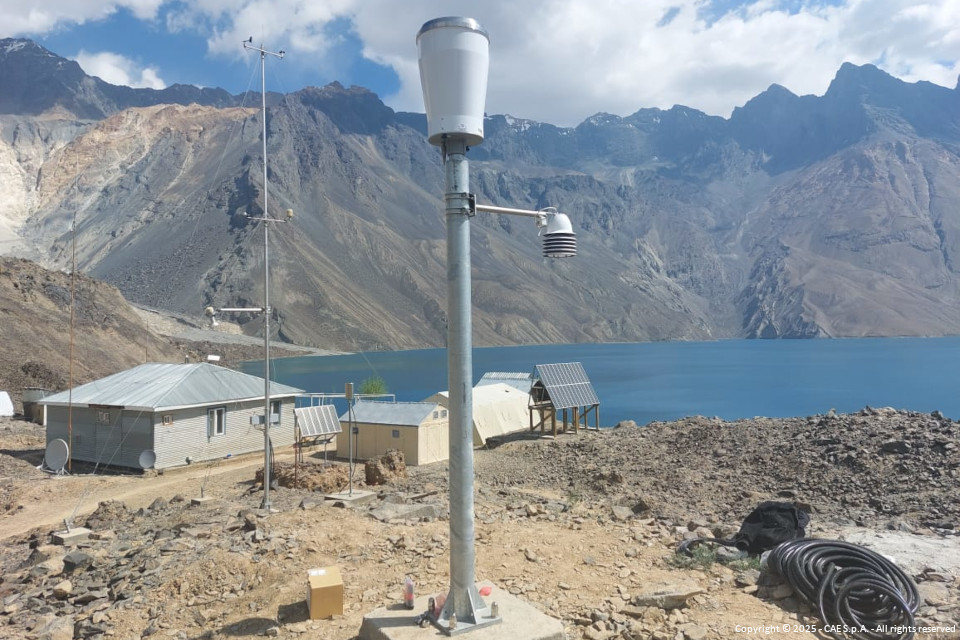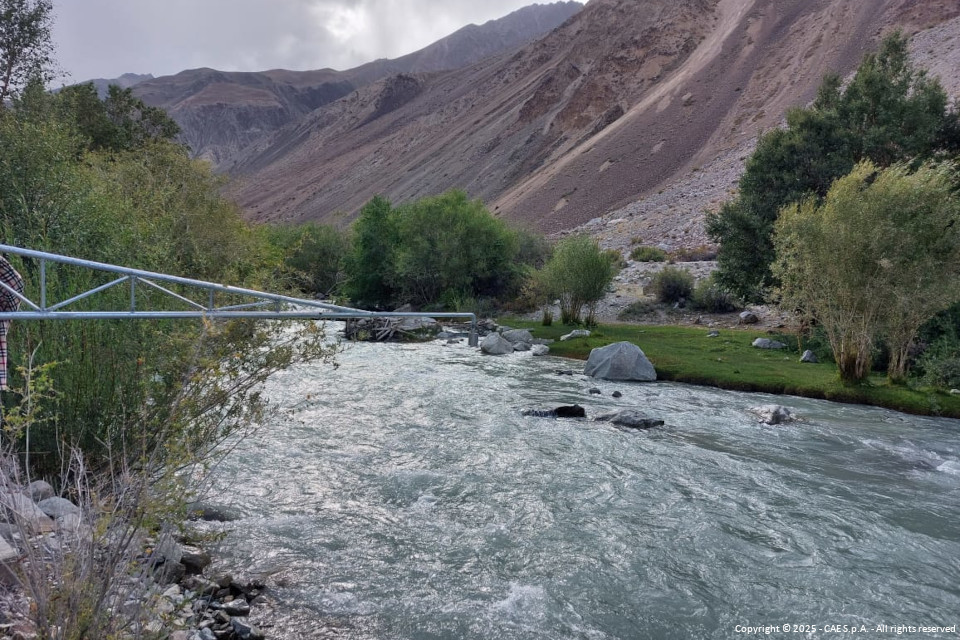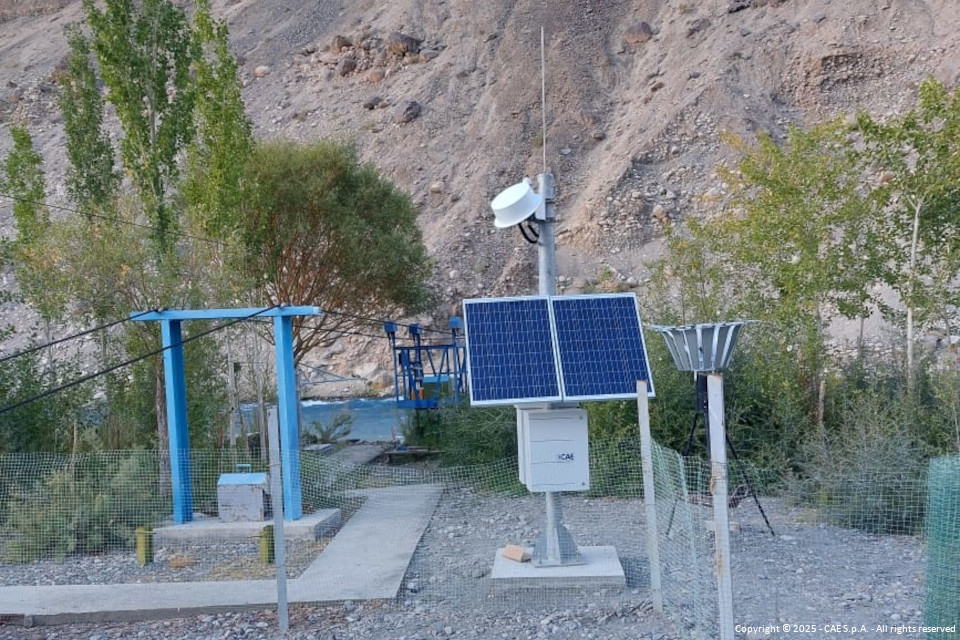Tajikistan: hydrological stations, flow measurements and training for the Sughd region
May 2025
Once again, even abroad, professionalism and quality products are appreciated and repurchased. In 2020, CAE started work on implementing the monitoring and early warning system for Lake Sarez in Tajikistan. This was not a trivial project, all installations are located at an altitude of between 2,600 and 3,000 metres above sea level, which can only be reached by helicopter or a 24 km trek, so a major effort in terms of logistics management, installation and operations was required. In fact, in the last issue we talked about some of the challenges we are prepared to tackle, being used to working at high altitudes. Due to the lack of mains electricity and cellular communication networks at most sites, the monitoring and communication stations are powered solely by solar panels and rechargeable batteries, with data transmission via satellite transmitter (click here to find out more about the project).
In 2024, the Hydro-Meteorological Service of Tajikistan returned to CAE technologies, precisely because they are considered reliable and suitable for installation in highly hostile environments. In this situation, agro-meteorological stations were provided and data was sent to a control centre equipped with the Aegis web software. Click here to find out more.
Now, in 2025, three new monitoring stations have been ordered and will be installed in the Sughd region to send data via GPRS to the control centre.
Each station will be equipped with:
- CompactPlus data logger;
- radar sensor for measuring water level and surface velocity for calculating flow rates;
- solar panel and backup battery.
The order also includes the supply of three ADCP current meters (Acoustic Doppler Current Profiler), advanced instruments used to make velocity profiles of river currents, which are useful for measuring flow rates in rivers and optimising the water resource distribution.
CAE will provide training for each site, both on-site during installation and remotely when required. They will be important opportunities to learn about:
- system operation;
- the maintenance activities required;
- data collection and analysis;
- safety protocols;
- software;
- installation and calibration of hydrometers, sensors for measuring water surface velocity and calculating flow rates.
Back to the index



